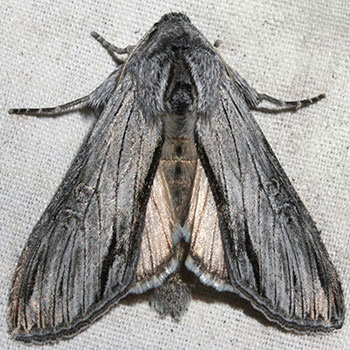Moths usually do not strike in the same manner that humans do. However, by creating gaps in clothing and textiles, they are able to cause injury. This could be averted by preserving them in airtight sacks or containers.
Although adult moths usually do not strike, their larval (caterpillar) stage has stinging mouthparts. Therefore, it is essential to employ a repellent to help keep them off your property.
They have no openings.
The moths you observe flitting around your residence lack mouths. The antennae of the insects are accustomed to consume foliage and fruits, sip nectar from blossoms, and discover companions. In addition, they will have a long, straw-like organ they use to take liquids and maintain the total amount of their body fluids. These caterpillars lose their jaws because they age and are struggling to suckle.
The absence of fangs may be the primary reason why adult moths cannot bite humans. However, the larvae of certain moths can cause injury to clothing and other fabrics. Some moth species' larvae consume wool and other fabrics, causing flaws, discoloration, and extra damage. Other moth species' larvae consume many different houseplants and pantry items, causing cavities and staining in these materials.
Moths are excellent imitators, and they have evolved various deterrents against predators. The Polyphemus moth, for instance, has prominent eyespots that provide it the appearance of a hornet. Your body of another insect, the wood nymph, resembles avian droppings. This allows the moth in order to avoid being consumed by predators which are drawn to feces.

Occasionally, some moths can sting humans, but that is uncommon. When contacted, these moths' spine-like filaments penetrate the skin and release a chemical that triggers an agonizing burn. More often than not, these injuries pose no threat to human health, although some individuals may experience an allergic attack manifested by hives-like red areas and lumps. The word because of this condition is lepidopterism.
They are nonvenomous.
Moths lack mouthparts with the capacity of biting, so they are not capable of biting humans. However, they are able to cause damage to your wardrobe and other issues in your residence. The most effective solution to prevent insects is by using a repellent.
Caterpillar-stage moths are capable of biting, but adults do not. Within their maturation, they'll gnaw through fabric and natural materials. The resulting gaps can be hugely expensive for your apparel and linens.
Moth caterpillars are equipped with spines for defense against predators. These spines will often become embedded in the skin. They can also induce lepidopterism, an allergic attack that resembles hives and will tingle for a few minutes.
Nearly all moth caterpillars lack spines that may harm humans, though there are exceptions. dangers of moths of the flannel moth, for instance, has filaments that may readily become embedded in the skin. This can create a painful, irritating, red, bumpy rash resembling hives, which might require medical treatment.
Other uncommon species of moth caterpillars have spines coated with venom. https://te.legra.ph/Can-You-Get-Bitten-by-way-of-a-Moth-05-30-2 belong to the genus Calyptra, plus they can cause irritating, red, and blistering skin reactions in humans. It can also cause a more severe reaction in the eye, which is often fatal if antivenom is not administered promptly.
They pose no threat to human health.

The majority of adult species of moths lack the necessary mouthparts to strike. However, certain moth caterpillars have spine-like filaments that may inflict excruciating injuries on humans. These strikes may cause irritation, discomfort lasting a few minutes, and scarlet patches resembling urticaria. These caterpillars are fortunately uncommon and don't pose a substantial health concern.
In contrast, moth larvae can be hazardous. Clothes moth, common miller moth, and pantry moth larvae consume fabrics and dried edibles. If these vermin penetrate your residence, they are able to cause damage to your clothing and food deterioration. The larvae of these moths may also consume wood and other household materials.
Although can moths hurt you do not bite, they can contaminate food, particularly in the jaws of newborn children. It is also known these caterpillars transmit pathogens and parasites. Additionally, they can contaminate food storage containers along with other kitchen objects.
Usually, moths pose no health hazards unless they are present in large concentrations. These insects are generally innocuous to humans, but those with allergies may experience skin or ocular irritation. Furthermore, they are able to exacerbate symptoms in people with respiratory allergies or dermatitis. In addition, in case a person is allergic to dust mites, the current presence of moths can trigger a recurrence of these allergy symptoms.
dangers of moths are a bother.
Since they can gnaw holes in wool, silk, along with other natural fibers, moths certainly are a nuisance. These openings can cause costly garments and comforters to become ruined. In addition to being a nuisance, they are able to chew through carpeting along with other fabrics. Moths are not, however, bad for humans. They do not bite and lack venom. However, their prickly filaments can aggravate the skin by puncturing it. These filaments can cause itchiness and a rash similar to hives.
Moths have wings that aid in flight. They are able to also detect the scent of sustenance utilizing their antennae. Some moths have proboscis mouthparts that enable them to pierce fruit and other plants. The calyptra moth, also known as the vampire moth, has a specialized proboscis for sucking blood from fruits and other plants.
Nearly all moths have a velvety appearance and inhabit dark areas such as closets and cabinets. They are nocturnal and sometimes conduct their activities while folks are asleep. When they swarm inside residences in large numbers, they may look like a nuisance.
Most individuals think that moths can bite since they create gaps in their clothing. However, that is achieved by larvae. Adult moths consume only nectar , nor consume fabric. They become a greater nuisance when they congregate in large numbers to reproduce inside. The population of moths surges in the spring and autumn, when they migrate to raised elevations to feed before hibernating.
